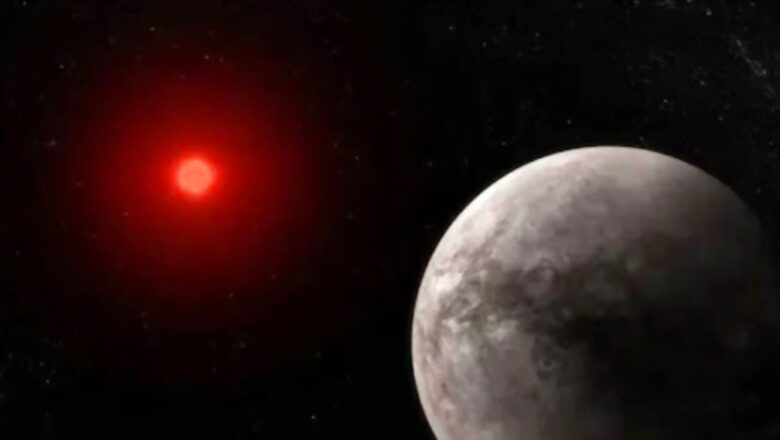
views
The American space agency NASA has recently discovered a similar planet like Earth in distant space that shines exactly like a moon. According to the Metro report, NASA’s space telescope had discovered several rocky exoplanets orbiting a star named Trappist-1. But now, the James Webb Space Telescope has finally been successful in measuring the temperature of one of the rocky exoplanets orbiting the star.
It was revealed that this planet, known as TRAPPIST-1b, which shines like a moon but does not emit such light, is due to a special reason. Researcher and co-author Dr Pierre-Olivier Lagage said that this is the first time that they have detected emissions from a rocky planet. This is an important step. They have found that TRAPPIST-1b is extremely hot. Its temperature is around 230 degrees Celsius. NASA further stated despite the possibility that it may not have an atmosphere, this planet may be as tiny and light-receiving as the other rocky planets in our solar system.
The video of the planet was shared by NASA on their official Twitter page. “What kinds of planets could host alien life? @NASAWebb will help tackle this question by looking at TRAPPIST-1, a system of seven rocky planets orbiting a faint star: https://go.nasa.gov/3s8mHX9. It’s the 5th anniversary of the TRAPPIST-1 news, but there’s more. @NASAAstrobio to come! ” NASA wrote.
What kinds of planets could host alien life? @NASAWebb will help tackle this question by looking at TRAPPIST-1, a system of seven rocky planets orbiting a faint star: https://t.co/pDQFLyFokVIt’s the 5th anniversary of the TRAPPIST-1 news, but there’s more @NASAAstrobio to come! pic.twitter.com/e35ymHBULy
— NASA (@NASA) February 22, 2022
According to Dr Green, the head of NASA’s Astronomical Research Team, no telescope has yet been able to measure this kind of light. This will allow scientists to determine whether or not life has ever existed on this planet. It is surrounded by seven other cool planets which gives a ray of hope.
TRAPPIST-1 b is the innermost planet and receives about four times as much heat as Earth receives from the Sun. However, the temperature found now has proved one thing: this planet has been included in the list of those planets where humans cannot live.
Last year, using NASA’s James Webb Space Telescope, scientists verified an exoplanet—a planet that orbits another star—for the first time. Known officially as LHS 475 b, the planet measures 99 per cent of Earth’s diameter, which makes it nearly identical to our planet.
















Comments
0 comment